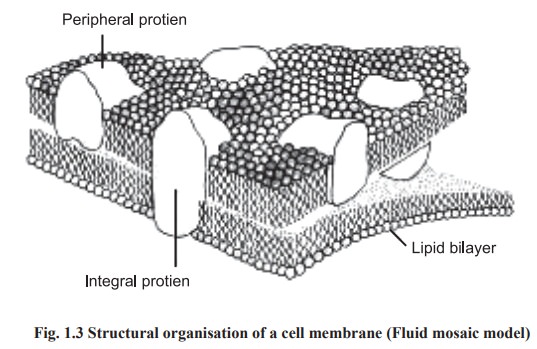Chapter: Biochemistry: Living Cell
Cell Membrane and its Functions

Cell Membrane
The cell is enveloped and thus separated from its
surroundings by a thin wall contains a rigid framework of polysaccharide chains
crosslinked with short peptide chains. Its outer surface is coated with
lipopolysaccharide. Cell membrane is also called as plasma membrane (or) plasma
lemma. The pili, not found in all bacteria have extensions of the cell wall.
The cell membrane contains about 45% lipid and 55% protein. The cell membrane
or plasma membrane have an average thickness of 75A°. The principal lipids are
phospholipids, sphingolipids and cholesterol. An important feature of these
lipids is they are composed of hydrophobic (water - insoluble) hydrocarbon
sections and hydrophilic (water soluble) units. The latter include charged
units (eg. phosphate or amino groups) and uncharged units (eg. hexose). In
water, such compounds orient themselves in such a way that only the hydrophilic
section is exposed to water. The hydrophobic components of individual molecules
tend to contact with other; this is accomplished either by arrangement into
micelles or by the formation of bilayers.
Two types of poteins are found in cell
membrane; viz. intrinsic or integral and extrinsic or peripheral (Fig.
1.3).Integral proteins are either partially or totally immersed in the lipid
bilayer and difficult to remove by any means other than the distruption of the
membrane with a detergent. Peripheral proteins are bound only to the surface of
membrane and interact only with the hydrophilic groups and therfore are readily
removed by extraction with an aqueous medium. The model of arrangement of
lipids and proteins in the memberane is known as fluid mosaic model.

Functions of cell membrane
·
The cell
membrane performs a number of important functions It holds the cell together
·
The membrane
is a selectively permeable boundary which allows water, certain required
nutrients and metal ions to pass freely It secrete waste products
·
It keeps out toxic materials
·
It
contain receptors to bind certain regulatory substances such as hormones which
regulate the various metabolic activities.
Related Topics